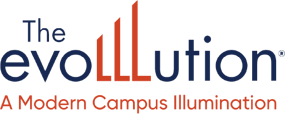Published on
Redefining the Student Experience: Why Higher Ed Must Lead with Personalization

Higher education is at a crossroads. Institutions are navigating shrinking enrollments, rising expectations from learners and the growing need to justify the value of a degree. In this rapidly changing landscape, one truth remains: today’s students are savvy consumers. They demand the same personalized, frictionless digital experiences they get from the eCommerce and streaming platforms they use every day. And if colleges and universities can't deliver, students will look elsewhere.
It’s time for higher ed to embrace a digital transformation that starts—and ends—with the student experience.
From Enrollment to Engagement: The New Baseline
We often talk about students as if they’re a monolith—18-year-olds fresh out of high school seeking a four-year residential experience. But that’s no longer the reality. Over 40% of U.S. degree-seeking students are adult learners, juggling education with work, families and other responsibilities. This evolution demands a shift in how institutions communicate, engage and support students.
From the moment a prospective student lands on a college website, they begin evaluating not just programs, but the experience itself. Can they find the information they need easily? Are the program outcomes clear? Do they feel like this institution understands them?
The institutions that win will be the ones that not only answer those questions—but personalize the answers.
Personalization as a Strategy, Not a Feature
Modern Campus research shows a 2,798% increase in inquiry conversions after adopting web personalization. That’s not a typo. It’s the impact of treating students like individuals—showing them content that’s relevant to their goals, surfacing pathways aligned with their interests and guiding them step-by-step from curiosity to enrollment.
But this kind of personalization isn’t just about smart technology. It’s about strategic alignment. Institutions need tools built specifically for higher ed. They need web platforms that understand FERPA requirements, accessibility standards and the nuance of multi-campus governance. They need a content management system (CMS) that doesn't just manage web pages—it manages relationships.
Making Complex Simple: Empowering the Entire Team
One of the biggest barriers to delivering this modern experience is capacity. Teams are stretched thin, often relying on a handful of technical staff to update content across sprawling, decentralized websites.
The solution? A CMS that allows anyone—regardless of technical ability—to update and personalize content quickly, confidently and accurately. Tools like drag-and-drop layout builders, direct-edit links and dynamic content blocks put power into the hands of the people who understand student needs best.
This isn’t about taking jobs away from developers. It’s about enabling them to focus on high-impact projects while empowering content creators across campus to deliver timely, student-focused experiences.
Accessibility and Agility Are Non-Negotiable
Modern Campus also understands that it’s not enough to be fast—it has to be right. Accessibility checks, brand governance, approval workflows and error validations are baked into the publishing process to ensure every page is compliant, consistent and current.
That’s especially critical for teams juggling multiple campuses, microsites and initiatives. With one centralized, agile platform, institutions can move faster, reduce risk and support their mission without adding headcount.
The Learner-to-Earner Imperative
At the heart of this transformation is a simple belief: institutions must support students through their entire journey—from first click to first job and beyond.
That means recognizing students’ needs before they even articulate them. It means surfacing career pathways that make program ROI clear. And it means building lifelong relationships that don’t end at graduation, but evolve with continuing education, upskilling and new credentials.
Modern learners don’t want a one-size-fits-all experience. They want institutions that adapt to them—just like every other platform they trust.
Higher ed has a choice: lead with personalization or risk becoming irrelevant. The good news? The tools, strategies and stories to get there already exist. It’s time to put them into action.



